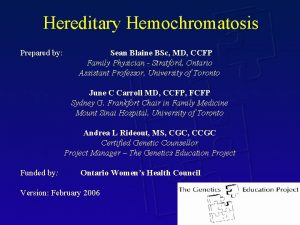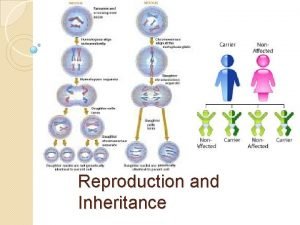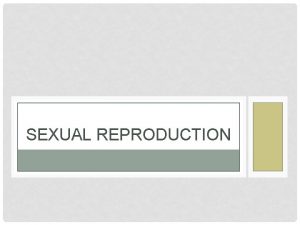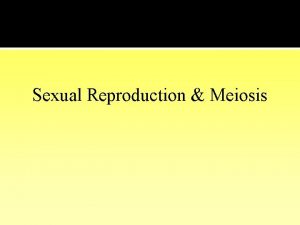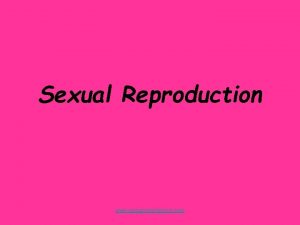Reproduction and Inheritance In sexual reproduction hereditary information





- Slides: 5

Reproduction and Inheritance In sexual reproduction, hereditary information from two organisms is combined to form a new organism (the offspring). The offspring will be a combination (genetic) of its parents. Our gametes or sex cells (sperm and egg cells) will combine to form the new organism (baby). In asexual reproduction, hereditary information from one organism is copied and split into two new organisms (offspring). The offspring will be an exact (genetic) copy of its parent. Our body cells will grow and repair themselves through this process.

Types of Reproduction 1 Asexual reproduction is the production of offspring from one parent. Asexual reproduction does not involve the fusion of gametes (sex cells-egg and sperm cells). In unicellular (one celled) organisms, such as bacteria, new organisms are created by binary fission-when one cell splits into two cells. Asexual reproduction in multicellular (more than one) organism results from the budding off of portions of their bodies. The offspring from asexual reproduction are genetically identical to the parent.

Types of Reproduction 2 Sexual reproduction is the production of offspring through a process called meiosis. Offspring produced through this type of reproduction are genetically different from the parent because the genes are a combination of two parents. One advantage of sexual reproduction is that it enables species to adapt rapidly to new conditions. For example, if a disease strikes a certain plant species, very few plants may have genetic variations that make them resistant to the disease. These few plants that are resistant will be able to survive the disease and keep the species going.

Types of Fertilization In vertebrate animals, the egg cell can be fertilized externally or internally. Internal fertilization occurs when the egg cell is fertilized on the inside of the female. Many mammals will exhibit internal fertilization. External fertilization occurs when the egg cell is fertilized outside of the female. Many fish and turtle species will exhibit external fertilization.

Chromosomes are tightly compacted strands of DNA (deoxyribonucleic acid). Everything about us is encoded in our DNA. Chromosomes will look like an “X” shape. The DNA in a human cell is estimated to be about 3 billion pieces (bases). To visualize this, imagine increase a cell’s nucleus to the size of a basketball. Then, imagine taking the DNA out of the basketballsized nucleus and stretching it into a straight line. That line of DNA would stretch for more than 20 miles. Humans will have 46 chromosomes. You have two copies of each chromosome-one from your mom and one from your dad.



